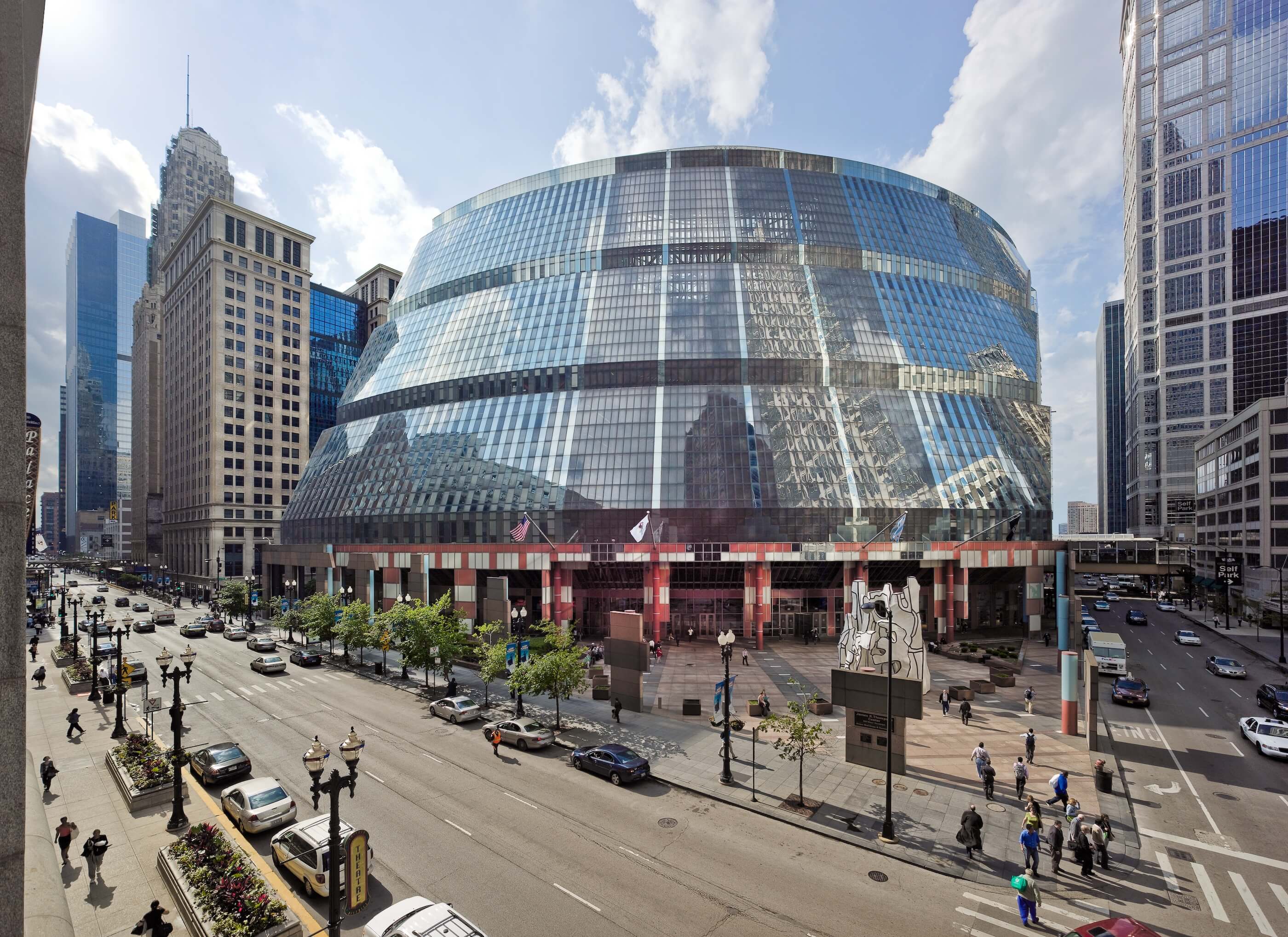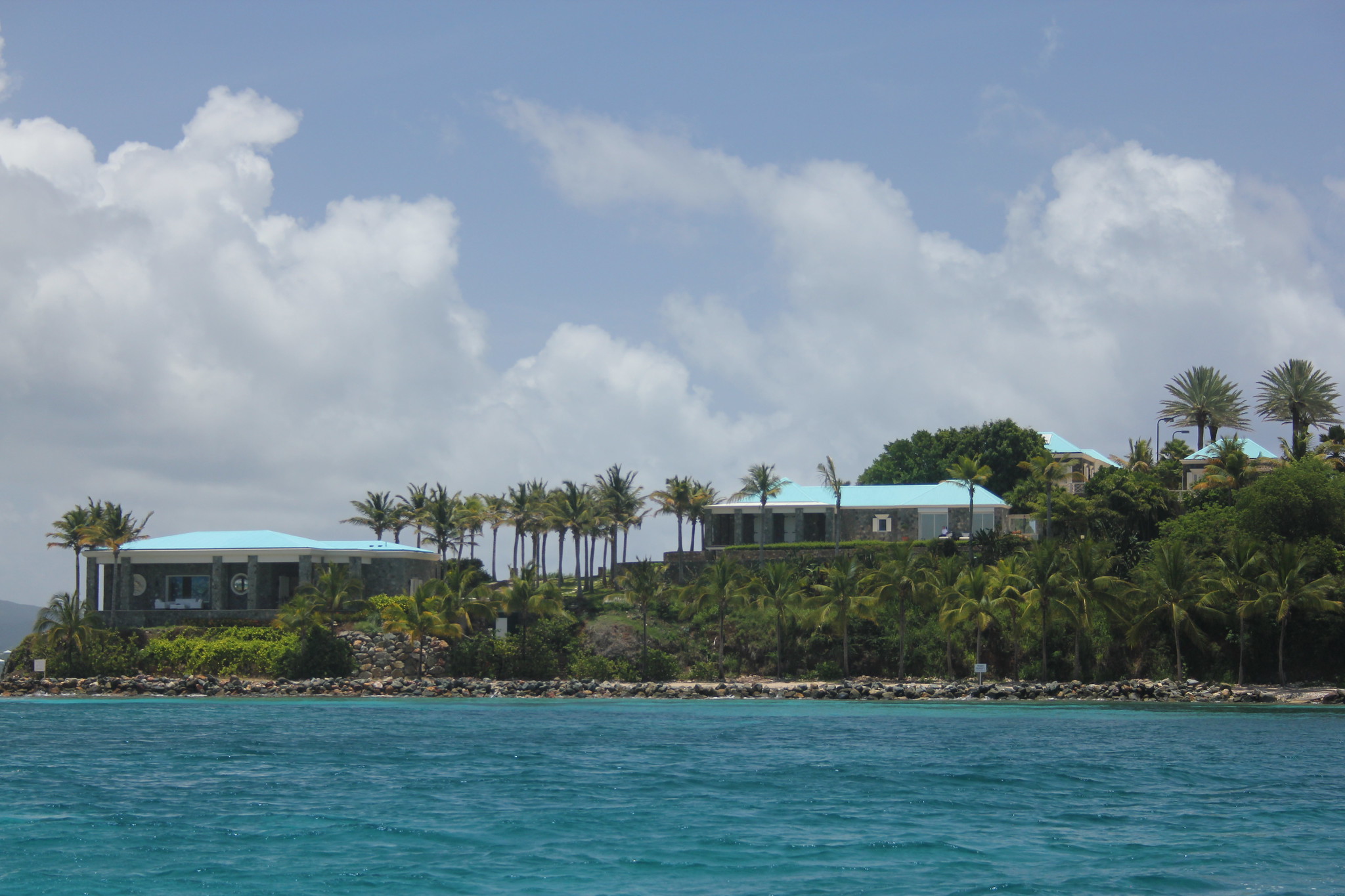As another year in the COVID-19 pandemic comes to a close, it’s worth reflecting on the good, the bad, and the ugly that came along with 2021. Just as it seemed things might soon get back to “normal,” a surging wave of Omicron variant cases is pushing people back inside for another long winter. Here are the biggest stories of the past year (in no particular order), a worthy read as we buckle in for the cold weather, mourn those we lost this year, and head into 2022.
If you don’t see the death of a beloved architect on this list—and we unfortunately lost plenty this year—that will come in a separate roundup.
The Vessel shuttered, then reopened, then closed, after a string of suicides

It’s been a year of ups and downs for the Heatherwick Studio-designed Vessel in Manhattan’s Hudson Yards. In January, a 21-year-old Texan man leapt to his death from the top of the 150-foot-tall, $150 million sculpture, which had remained open during the pandemic. After that, developer Related Companies decided to close the structure temporarily while it consulted with suicide-prevention experts and psychiatrists on steps moving forward to stop something similar from happening in the future. This came after two prior suicides in 2020.
Then, the Vessel reopened in May. Despite advocates such as AN’s own Audrey Wachs and Community Board 4 calls for higher railings, netting, or other physical barriers, Related instead beefed up security at the tower of staircases, began charging $10 to enter (access was previously free), and implemented a “no solo visitors” rule. On July 29 a fourth person jumped to their death, this time a 14-year-old teenager. The Vessel has remained closed ever since, and when it reopens at some indeterminate time in the future, it could look very different than it does today.
After rioters breached the Capitol came calls for Architect of the Capitol J. Brett Blanton’s resignation
The investigation into the January 6 riots at the Capitol Building in Washington, D.C., is still unfolding as Congress continues to issue subpoenas to potential witnesses. As throngs of Trump supporters broke into the complex in an attempt to disrupt Congress’s certification of the 2020 presidential election in favor of Joe Biden, all eyes were on Capitol security—and by extension, the Architect of the Capitol (AOC). When the dust settled, five were dead and potentially hundreds more were injured, and insurrectionists had made off with sensitive documents, statues, and other pieces of federal property.
The AOC’s Office of Security Program manages the Capitol Police Buildings, Grounds and Security team, which is responsible for securing and hardening the Capitol campus. Blanton also sits on the Capitol Police board. Blanton, an airport and naval engineer controversially nominated to the position by former President Trump in December of 2019 and confirmed on January 16, 2020, is the 12th Architect of the Capitol. The position oversees the continued maintenance and operation of the U.S. Capitol and surrounding 570 acres of grounds, as well as the Library of Congress, U.S. Supreme Court, and a litany of other historic buildings and the artworks they contain.
It was only natural then that calls came for Blanton’s firing from both the press and lawmakers, as the attack happened under his watch. Instead, however, in the time since January 6, Blanton remains the only member of the Capitol Police Board to have kept his job.
Katerra went bust
This year, like 2020, saw the passing of many great architects and planners, but it also marked the death of a modular prefab startup that had promised to change everything. News broke on June 1, quite unexpectedly (although perhaps not if you had been following the company’s regular cash infusions from backer SoftBank) that the company would be shutting down, without money in the bank to even pay staff severances.
Founded in 2015 by Michael Marks (pushed out by the board of directors in 2020), Katerra aimed to bring “the Silicon Valley approach to building,” by reducing reliance on skilled labor and automating the building process. In AN’s 2018 profile, Craig Curtis, one-time Chief Architect at Katerra, reiterated that the company’s aim was to show that mass fabrication didn’t have to mean a sea of endless copycat towers, but that every building didn’t need to stand alone as an architectural prototype, either. By vertically integrating every aspect of the supply chain and producing its own materials, then modules it would install on-site, Katerra was aiming to succeed where other modular builders have failed by keeping costs low. That led to the company establishing its own 250,000-square-foot mass timber factory in Spokane, Washington, as well as other facilities.
It also led to Katerra’s acquisition of collaborators Michael Green Architecture and Lord Aeck Sargent in 2018. Thankfully, after Katerra’s tailspin, both firms have reemerged as independent and are still kicking. As for Katerra’s factories? They’ve been by and large snatched up by other modular construction companies looking to make inroads in the U.S.
Anne Lacaton and Jean-Philippe Vassal won the 2021 Pritzker Prize

French architects and educators Anne Lacaton and Jean-Philippe Vassal were this year’s winners of the 2021 Pritzker Architecture Prize. The duo, principals of Lacaton & Vassal Architectes, are the 49th and 50th Pritzker Prize Laureates and the first French recipients of the prestigious award since 2008 when Jean Nouvel took home the architecture world’s top honor. In addition to Nouvel (and now Lacaton and Vassal), only one other French architect, Christian de Portzamparc, has won the Pritzker Prize since it was first awarded in 1979.
While Lacaton and Vassal are based in Paris, where they founded their eponymous practice in 1987, Lacaton is a native of Saint-Pardoux, in west-central France, while Vassal was born in Casablanca. The two first connected in the late 1970s while students at Nationale Supérieure d’Architecture et de Paysage de Bordeaux (ENSNAP Bordeaux) before embarking on divergent, early career paths, with Lacaton earning her Masters in Urban Planning from Bordeaux Montaigne University in 1984 and Vassal relocating to Niger, West Africa, to practice urban planning. It was in Niger’s capital city of Niamey that Lacaton and Vassal came together to complete their first joint project, a straw hut built from locally sourced materials. While modest, this collaboration sparked a design ethos that continues today—one that champions affordable and readily available building materials and avoids destroying existing buildings in favor of adapting and adding to them.
COVID wreaked havoc on the supply chain, driving up material costs across the board
Timber prices have been up, down, and all over the place this year, to say the least. International shipping snarls and ongoing labor shortages, combined with the same kind of just-in-time demand forecast mismatches that have led to worldwide silicon shortages, came for the construction industry. Housing starts fell massively in the first half of the year as timber prices continued to rise, only to abate as wood mills began ramping up production to meet the insatiable demand for wood (with more people spending time at home, both home expansions and DIY projects exploded in popularity).
Still, as container ships continue to pile up along the West Coast with no one to unload them, and as COVID’s more infectious Omicron variant has begun causing companies to shutter once again, the outlook for 2022 isn’t rosy. Furniture makers such as IKEA have already committed to raising prices next year in anticipation of worsening conditions, and the growth of the Architecture Billings Index, on a tear for ten consecutive months, is slowing down.
Saudi Arabia unveiled a 100-mile-long linear city in a desert
Forget about the 15-minute city, is the future of urbanism the “100-mile city?” Saudi Arabia seems to think so, unveiling THE LINE on January 10 in a flashy keynote headed by Crown Prince Mohammed bin Salman, a 106-mile-long (170 kilometer) city devoid of cars that will (allegedly) cut across the 10,000-square-mile city-state of NEOM.

THE LINE, according to the reveal video, will stretch from the Red Sea to the mountains of northwest Saudi Arabia and condense urban centers into a band to preserve “95 percent” of NEOM’s natural wilderness. The Crown Prince also touted a host of futuristic benefits, saying that THE LINE had been designed around walkability first and foremost and that cars and roads would be wholly banned, with transportation needs met by an underground train system. An end-to-end trip will reportedly only take 20 minutes.
You might be asking if a “walkable city” arranged in a straight line is an oxymoron, but from the launch video, it looks like THE LINE will actually be made up of clusters of aggregated urban areas arranged around a central “spine” rather than a single large strip with functions distributed across it. NEOM’s developers have promised that everything will be accessible in a “5-minute walk,” and bin Salman touted that the entire development will be net-zero, powered by entirely renewable energy, and pollution-free.
Keep your eyes peeled in 2022 for more info on THE LINE (or, if we’re being candid, likely no new information).
A year after Christo’s death, the Arc de Triomphe was finally wrapped
Although neither Christo and Jeanne-Claude were alive to see it, Arc de Triomphe, Wrapped finally opened in Paris on September 18. It had been a dream of Christo’s to drape the 185-year-old Parisian monument in silver polypropylene fabric and cinch it with red ropes since 1962, and plans had been in the works since before Jeanne-Claude’s death in 2009. Although the monumental installation had been planned to debut in the spring of 2020, it was delayed due to the pandemic, and Christo passed away on May 31, 2020, never seeing his vision realized.
The Thompson Center will be saved after all… kind of

And last but certainly not least, the Helmut Jahn-designed James R. Thompson Center in Chicago was put up for sale by the State of Illinois and sold this year. Jahn himself was killed earlier this May while riding his bicycle, but had been a major proponent of repurposing the 36-year-old governmental center rather than demolishing it—and that’s exactly what developer Prime Group reportedly plans on doing. Prime Group is close to closing a $70 million deal to purchase a majority stake in the office tower, and has tapped JAHN to renovate the structure, including a full reclad.
They plan on beginning renovation work sometime in 2022, pending the completion of the sale. The tower’s signature soaring atrium will be kept open and not subdivided, but the entire building will require a curtain wall recladding to replace the single-pane glass originally used. This will both improve the building’s leaky thermal envelope and improve acoustics.
Once the two-year, $280 million renovation is complete, the postmodern Thompson Center will be converted into a mixed-use complex (though the exact programming breakdown has not been revealed yet). The State of Illinois will retain 30 percent ownership of the site as well as continue to lease some office space, though the bulk of its operations will relocate to 555 W. Monroe Street, a West Loop tower the state purchased earlier this year that once played regional headquarters to PepsiCo. The proposed renovation could be completed sooner but Reschke reportedly plans on keeping the building open during construction so that the state offices there can remain operational. After years of deferred maintenance, this looks like a major win for preservationists, as it was estimated repairs could cost up to $325 million.











